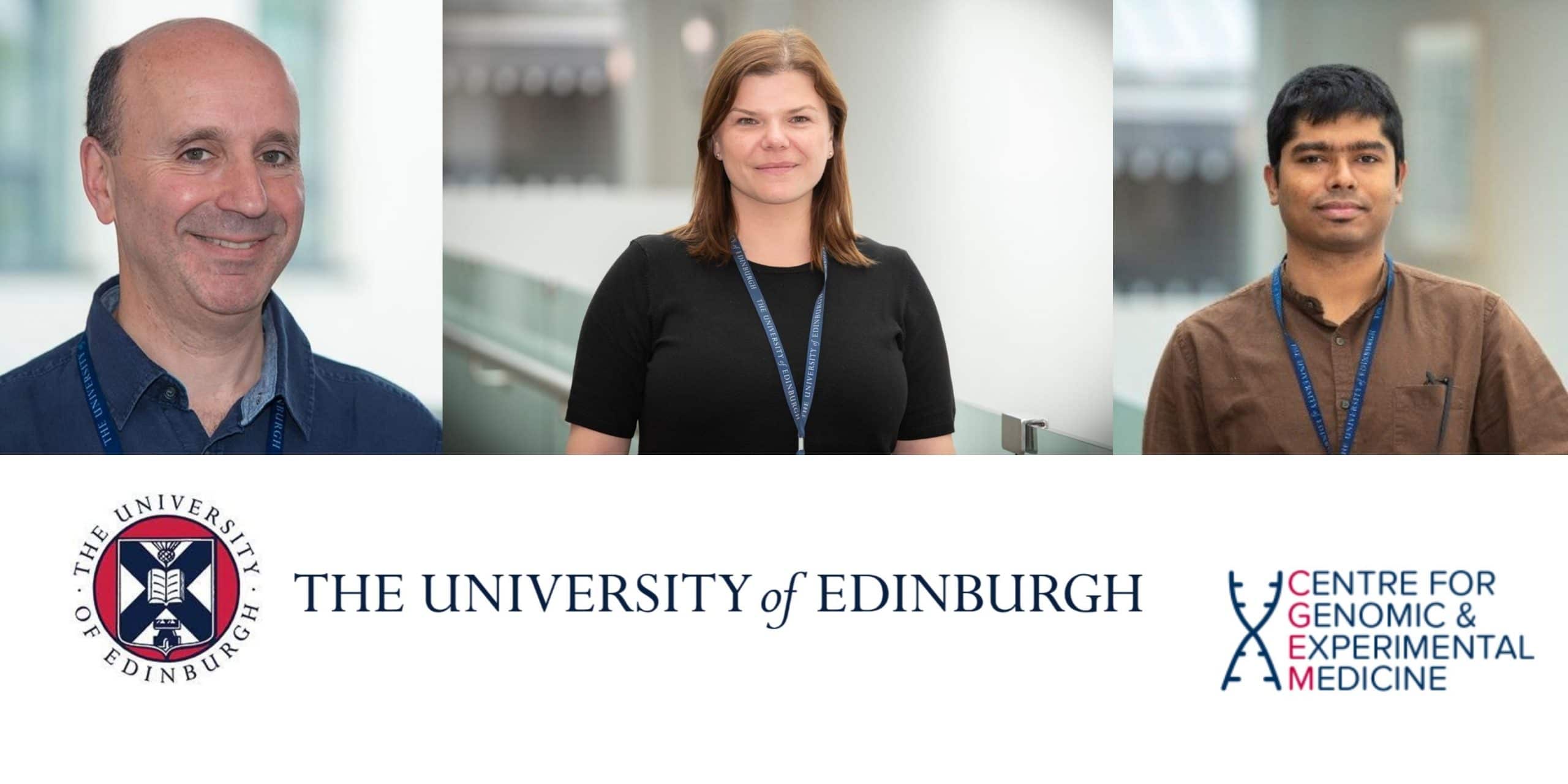Nonacus Cell3™ Target technology assists with DNA methylation sequencing
November 11, 2021. Reviewed by Celina Whalley, April 26, 2024.

Researchers at The Centre For Genomic and Experimental Medicine, University of Edinburgh, have used Nonacus Cell3 Target technology to undertake targeted DNA methylation sequencing with the aim of finding DNA methylation specific breast cancer markers.1
This work is funded by Cancer Research UK. Nonacus spoke to Dr. Martyna Adamowicz from the Centre for more information.

Professor Tim Aitman. Dr Martyna Adamowicz and Dr Prasun Dutta from The Centre For Genomic And Experimental Medicine
Why are you undertaking targeted DNA methylation sequencing?
Our aim is to find DNA methylation specific breast cancer markers that can be used for early detection of the disease and differentiate between different type of breast cancer using cell-free DNA (cfDNA) from liquid biopsy.
Nonacus technology has enabled us to enrich for the regions of interest which were then sequenced and DNA methylation level was analysed through a custom methylation bioinformatics analysis pipeline.
What were some of the challenges associated with cell-free DNA that you had to overcome?
Minimal amount of cfDNA, obtained from available plasma samples, was the main hurdle but we have now optimized the protocol which can be used with as little as 20 ng of cfDNA. We have also established a custom methylation bioinformatics analysis pipeline.
How have you evaluated the product?
Our experiments were performed using Mcf-7 breast cancer cell line spiked in at different concentrations into the background of leukocyte DNA along with methylated and non-methylated control samples and a pure MCF-7 sample. They were all sheared to the size of cfDNA. CpG markers of interest were sourced from machine learning modelling and published literature.
We wanted to determine how well our markers differentiate the sample mixtures. We used Nonacus target enrichment protocol to enrich for genomic regions containing CpGs of interest after they underwent NEBNext® enzymatic methyl-seq conversion.
What results have you seen?
Hierarchical clustering of methylation % values of the target region containing the tested biomarkers revealed clear distinction between different samples. Control samples, fully methylated and non-methylated DNA, showed high and low methylation % values, respectively. Pure Mcf-7 sample had much higher methylation levels than leukocyte at the regions selected for Mcf-7 hypermethylation. Decrease of Mcf-7 percentage spike in led to decreased methylation signal. Hyper- and hypo- methylated regions also clustered together.
What are your next steps and future plans?
Our future plan is to use Nonacus target enrichment protocol in order to perform similar experiments using breast, prostate and kidney cancer patient samples.
References
- de Procé SM, Adamowicz M, Dutta P, Warlow SJ, Moss J, Shemer R, et al. Development of methylation-based biomarkers for breast cancer detection by model training and validation in synthetic cell-free DNA. bioRxiv. 2022;2022-02.